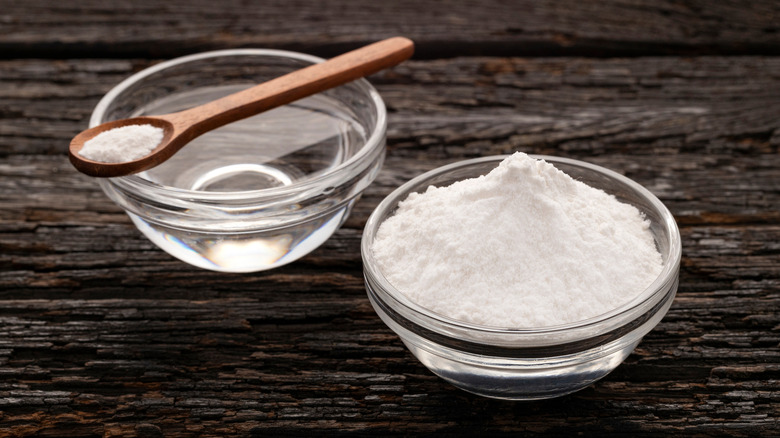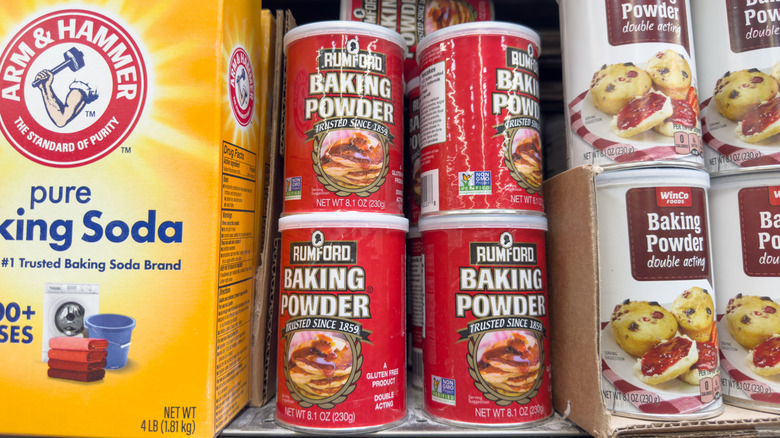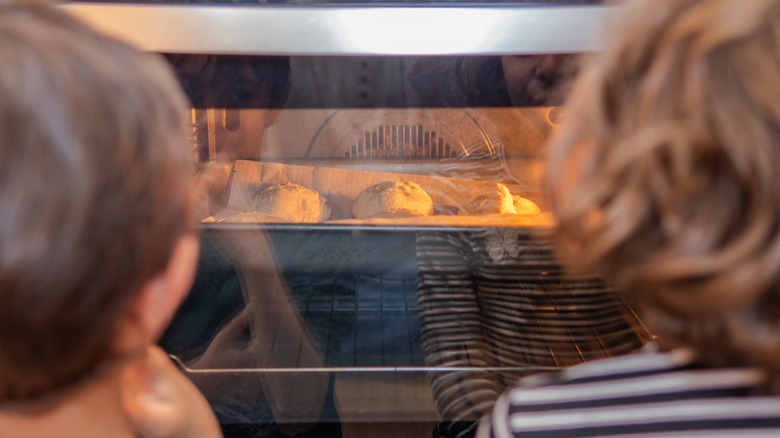What Does Baking Soda Actually Do For Baked Goods?
You've seen what it can do in your science fair volcanoes, you've seen what it can do for your clogged drains or dirty coffee maker, and you've seen what it can do for your chocolate cake. There's no denying that this unassuming pantry staple is an absolute powerhouse when it comes to miscellaneous household needs, but... what actually is baking soda? And how does it help your baked goods go from flat and unleavened to fluffy and risen? Buckle up: We're about to give you a science lesson.
Baking soda, also known as sodium bicarbonate, is a chemical compound that is both naturally found and commercially created by adding carbon dioxide to processed trona ore, a sodium carbonate compound. When combined with an acid and a liquid (for example, vinegar), the following reaction takes place: NaHCO3 (baking soda) plus H+ (the acid) becomes Na+ (sodium), CO2 (carbon dioxide), and H2O (water). In baked goods, this acid often comes from ingredients like yogurt, buttermilk, cocoa powder, vinegar, or cream of tartar. The release of the carbon dioxide creates and expands air bubbles within the baking dough, causing your cookies, cake, or banana bread muffins to rise.
What makes it different from other leaveners?
Of course, baking soda isn't the only way to help a baked good rise. So why use baking soda instead of baking powder? And if you need to substitute one for the other, is that possible? Baking powder is actually made in part of baking soda, combined with a dry acid like cream of tartar. Because baking soda needs both an acid and a liquid to be activated, the baking powder mixture stays dormant until it's incorporated into your batter. Double-acting baking powder, which is the kind most often sold in stores, adds another layer: While it will activate first when liquid is added, it will activate again when it comes in contact with heat (or in other words, when it's put in the oven).
If you don't have one or the other when a recipe calls for it, it is somewhat possible to do a substitution. Just make sure you don't add too much baking soda — it's three to four times stronger than baking powder, and using too much can result in a soapy taste. And if you're using baking soda rather than the called-for baking powder, you'll have to add more of the acidic ingredient in the recipe to balance out the missing dry acid found in baking powder.
When to use each ingredient
With two such similar ingredients, the question naturally arises: When should you use each one, and why? Again, it comes back to chemistry. The double-acting nature of baking powder makes it an ideal choice for, say, cookies, which may have dough that needs to be chilled in the refrigerator before baking. Baking soda is more commonly used for batters that are put directly into the oven, since the reaction begins as soon as an acid and a liquid are added — if left out, the reaction will run its course before baking, and the batter won't rise well once baked.
One more mystery we can solve for you: Some recipes call for both baking powder and baking soda. Why? Well, when you add an acid to a base like baking soda, it's effectively neutralized. Great in most cases, but not so great if you want an acidic flavor in your bake — think buttermilk pancakes, or lemon bread. So, by adding a small amount of baking powder (which includes a dry acid), there's enough acid "left over" after the reaction has run its course that the flavor remains.
If you weren't convinced before, hopefully you are now: Baking has never been just an art. It's (delicious) science.


